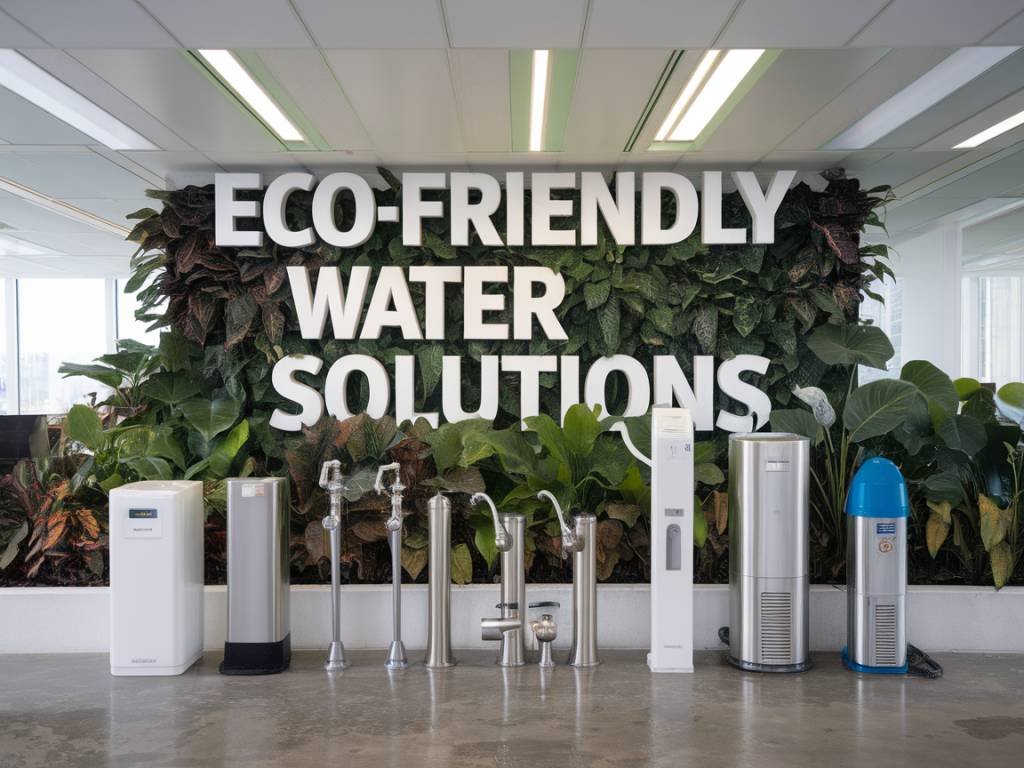« `html
Understanding Corporate Water Waste
In today’s rapidly evolving world, businesses face numerous challenges in their quest for sustainability. One of the primary areas where corporate entities can make a significant impact is in the realm of water conservation. As industries grow, so does their demand for water, making it crucial for companies to adopt eco-friendly water solutions.
Corporate water waste can be described as the inefficient or unintended use of water resources within a company’s operations. This not only includes physical waste, where water is misused or mishandled, but also the embedded water in products and processes that isn’t immediately visible. With escalating water scarcity in many parts of the world, understanding the gravity of corporate water waste becomes essential.
Impact of Corporate Water Waste
The repercussions of corporate water waste are multifaceted. Environmentally, wasted water means additional strain on already overburdened water systems and ecosystems. Socially, this can deprive communities of vital water resources, especially in water-scarce regions. Economically, wasted water leads to higher utility bills and increased operational costs.
Globally, industries like agriculture, manufacturing, and mining consume vast quantities of water. For instance, textiles and garment manufacturing are notorious for their massive water footprints due to the dyeing and finishing processes involved. By reducing wastage, companies can significantly diminish their environmental impact and foster a more sustainable operational model.
Implementing Eco-Friendly Water Solutions
To address this pressing issue, businesses must turn towards eco-friendly water solutions. These strategies not only help in conserving water but also improve a company’s sustainability profile and profitability.
Water Audits and Monitoring Systems
Conducting regular water audits can help businesses identify areas where they consume the most water. Through monitoring systems and smart meters, companies can efficiently track water usage patterns. These tools allow for real-time alerts in case of leaks or unusual consumption, ensuring that no drop goes unnoticed.
Water Recycling and Reuse
One effective strategy for reducing waste is water recycling. This process involves treating wastewater to make it suitable for reuse in other processes. Many industries have successfully implemented closed-loop systems, where water is continuously reused and recycled, minimizing the need for fresh input.
The use of greywater systems, which divert water from sinks, showers, and washing machines for non-potable purposes like irrigation or cooling processes, can drastically reduce dependence on fresh water sources.
Implementing Water-Saving Technologies
Advanced technologies have paved the way for significant water savings. Innovations such as low-flow fixtures, water-efficient appliances, and automated irrigation systems can drastically cut water usage. In manufacturing, precision technologies allow for optimal water use, ensuring only the exact amount needed is consumed.
Green Infrastructure and Rainwater Harvesting
Integrating green infrastructure solutions such as rain gardens, permeable pavements, and green roofs can contribute to urban water management. These solutions not only help in controlling stormwater but also enable the harvesting of rainwater. This can be subsequently treated and utilized for various non-potable purposes, offsetting the need for municipal water supply.
Educating and Engaging Employees
Creating a culture of water conservation within the company is crucial. Educating employees about the importance of water conservation and engaging them in sustainability initiatives can lead to significant behavioral changes. Incentive programs that reward innovative ideas for water conservation can foster a proactive and responsible workforce.
Regulatory and Certification Benefits
Adopting eco-friendly water solutions can also help companies comply with regulatory standards and achieve certifications such as LEED (Leadership in Energy and Environmental Design). These certifications not only enhance a company’s public image but also position them as industry leaders in sustainability.
Future Trends in Corporate Water Solutions
The landscape of corporate water solutions is continuously evolving, with new technologies and methodologies emerging regularly. Companies are now looking towards IoT devices and data analytics to optimize water management. Predictive analytics can forecast water needs and anticipate potential shortages, allowing for a more efficient allocation of resources.
Evaluating the Cost-Benefit of Water Solutions
To maximize the benefits of these eco-friendly solutions, businesses must conduct a thorough cost-benefit analysis. While there may be initial investment costs, the long-term savings, in terms of reduced water bills and increased operational efficiency, often outweigh these expenses.
Companies can also leverage government incentives and subsidies available for water-saving solutions, further decreasing the financial burden.
Adopting a Holistic Water Management Approach
Ultimately, the journey towards reducing corporate water waste requires a holistic approach. By combining multiple strategies and continually assessing their water footprints, businesses can play a pivotal role in sustainable water management, ensuring resources for future generations while enhancing their operational efficiency and public image.
Incorporating eco-friendly water solutions is not just about cutting costs or meeting regulatory standards, but about being stewards of the environment and showcasing corporate responsibility in an increasingly resource-constrained world.
« `
